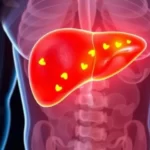An untreated tooth infection is a minor inconvenience. However, the truth is that even small infections can evolve into much more serious problems, potentially spreading to other areas of the body. A tooth infection signals that bacteria have infiltrated the soft tissue inside the tooth, causing inflammation and damage.
When treated promptly, the body can usually recover. But if left unaddressed, the infection can worsen, eventually overwhelming the immune system and leading to potentially fatal complications.
Can a Tooth Abscess Kill You?
To understand how a tooth infection can become deadly, it’s essential to know how these infections develop and spread. When bacteria reach the soft tissue at the center of a tooth, called the pulp, an infection typically begins. This is often caused by deep tooth decay, cracks in the enamel, or untreated cavities.
Over time, the infection can form a dental abscess, a pocket of pus that continues to grow and exert pressure. The symptoms can become increasingly severe, including constant pain, swelling, and sensitivity.
Historically, before the era of modern dentistry, tooth infections were a common cause of death. In fact, before 1908, studies show that 10–40% of severe dental infections led to fatal outcomes. Today, death from a tooth infection is rare, thanks to antibiotics and advanced dental treatments. But rare doesn’t mean impossible.
When Does a Tooth Infection Become Life-Threatening?
Just because you have a toothache doesn’t mean your life is immediately in danger. However, a severe dental infection can lead to complications when bacteria spread to the bloodstream or vital organs. Once an infection turns septic, the risk becomes critical. If it reaches the heart, brain, or lungs, the consequences can be devastating.
Potential life-threatening complications of an untreated dental abscess include:
- Sepsis – A severe, body-wide immune reaction to infection.
- Necrotizing fasciitis – A rapidly spreading infection that kills soft tissue.
- Mediastinitis – Inflammation in the chest between the lungs, which can compromise breathing.
- Endocarditis – Infection of the inner lining of the heart.
- Cavernous sinus thrombosis – Blood clots near the brain caused by spreading bacteria.
- Brain abscess – Pus forms in the brain due to the spread of infection.
- Osteomyelitis – Infection in the bone near the tooth.
While these conditions are rare, dentists and healthcare providers are trained to watch for early warning signs, especially in high-risk individuals.
Risk Factors That Increase Complications
Not everyone faces the same risk when it comes to tooth infections. Certain conditions and circumstances can make it more likely for a minor infection to escalate:
- Older age: Seniors are more prone to rapid complications and fatal infections.
- Diabetes: Impaired healing and circulation raise infection risks.
- Weakened immunity: Patients with autoimmune diseases, cancer, or HIV may struggle to fight off infections.
- Malnourishment: Nutritional deficiencies can suppress the immune system, making infections more challenging to overcome.
If you fall into any of these categories, seeking prompt dental care is even more critical.
How Long Does It Take for a Tooth Infection to Become Fatal?
In most cases, a dental infection progresses gradually. It typically begins with tooth decay, which takes months to reach the pulp. From there, an abscess may form, sometimes persisting for weeks or even months before symptoms worsen significantly.
However, the timeline can accelerate dramatically in cases involving trauma to the tooth, weakened immunity, or existing health conditions. Once an abscess is present and the infection begins spreading, especially to critical areas like the neck, brain, or bloodstream, death can occur in as little as a few days without treatment.
In summary, most people have a window of opportunity to get treatment. But once systemic symptoms emerge, that window closes rapidly.
How to Know If a Tooth Infection Has Spread to the Blood
When an infection reaches the bloodstream, it can trigger sepsis, one of the most dangerous medical emergencies. Though rare in dental cases, it can be fatal without urgent care.
Signs that an infection may have reached your blood include:
- High fever
- Rapid heartbeat
- Shortness of breath
- Confusion or dizziness
- Severe fatigue
- Swelling in the face or neck
If any of these symptoms occur, seek emergency medical care immediately.
Sepsis is uncommon in patients who receive early dental treatment. The longer an infection is left unchecked, however, the greater the risk. That’s why early detection is the key to survival.
Effective Treatment: Stopping the Infection at the Source
Fast treatment is crucial to prevent the infection from spreading beyond the tooth. Addressing both the symptoms and the underlying cause ensures a complete recovery and lowers the risk of complications. Most dentists use a two-step approach:
1. Antibiotics to Control the Infection
Once an infection is diagnosed, the first step in treatment typically involves prescribing antibiotics. These medications help slow or stop the spread of harmful bacteria and reduce inflammation.
For mild to moderate infections, antibiotics are usually taken orally in pill form. However, suppose the disease is severe or has spread beyond the tooth. In that case, your dentist or doctor may administer intravenous (IV) antibiotics to ensure the medicine reaches the bloodstream quickly and works more effectively.
While antibiotics are critical in managing the infection, it’s essential to understand that they do not eliminate the source of the problem. They’re used to support the body and buy time until the infected tissue or tooth can be adequately treated or removed.
2. Addressing the Source of Infection
This is where true healing begins. If the tooth is salvageable, a root canal is usually performed to remove the infected pulp. After cleaning and sealing the tooth, a dental crown is often placed to restore function.
In more advanced cases where the tooth is beyond saving, extraction may be necessary to prevent further spread of infection.
While antibiotics help manage symptoms, they are not a cure by themselves. Removing the infection’s origin is the only way to ensure full recovery.
Don’t Wait, Act Early
Though it may take weeks or months for a tooth infection to spread, waiting is not worth the risk. In many cases, patients endure pain for too long before seeking help, sometimes until it’s too late.
The best protection against fatal outcomes is preventive dental care. Routine check-ups, professional cleanings, and treating cavities early can keep minor dental issues from becoming life-threatening emergencies.
Ask a Dentist: How Long Until a Tooth Infection Kills You?
If you’re experiencing tooth pain, swelling, or signs of infection, don’t ignore it. These symptoms are your body’s way of warning you that something is wrong. In severe cases, the disease can spread rapidly and compromise critical systems in your body.
It may take time for a tooth infection to turn deadly, but the shift from “harmless” to “life-threatening” can happen faster than most people expect.
Regular dental visits and timely intervention remain your best defense against dental infections that can spiral out of control.
Conclusion
In modern dental care, death from a tooth infection is rare, but it’s still a real possibility when treatment is delayed. The most significant risk doesn’t come from the infection itself, but from ignoring it until it’s too late. A seemingly minor abscess can quickly spiral into a life-threatening emergency, mainly once it spreads to the bloodstream or vital organs.
The good news is that today’s dental technology makes early diagnosis and treatment simple and effective. If you’re experiencing signs of a tooth infection, such as pain, swelling, fever, or fatigue, don’t wait. Prompt action can stop the infection at its source and protect your overall health.
If something doesn’t feel right, schedule a dental visit immediately. It’s not just about saving a tooth; it could save your life.
Frequently Asked Questions
1. How do you tell if a tooth infection is killing you?
If you’re experiencing symptoms like high fever, rapid heartbeat, confusion, extreme fatigue, or difficulty breathing, the infection may have entered your bloodstream and become life-threatening. Seek emergency medical help immediately.
2. How long can you live with an infected tooth?
While some people live with infected teeth for weeks or months, it’s risky. Once the infection spreads, it can become fatal within days. Early treatment is critical to avoid serious complications.
3. How long before a tooth infection turns septic?
A tooth infection can cause sepsis within days if left untreated, especially in individuals with weak immune systems. Signs of sepsis include fever, chills, confusion, and low blood pressure.
4. How fast can a tooth infection spread to your brain?
If the infection spreads through blood vessels or sinus cavities, it can reach the brain within a few days to a couple of weeks, depending on severity. A brain abscess is a medical emergency.












Leave a comment